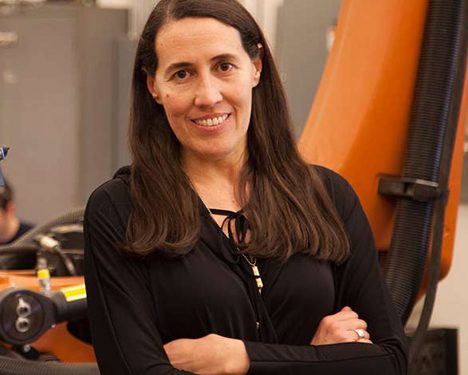
Lecture Review: Monica Ponce de Leon
April 22, 2017
Denise Scott Brown wins Jane Drew Prize 2017 for women in architecture
July 31, 2017‘Architects in Schools’ Program Empowers Kids with Choice and Positive Role Models
Have ever wondered how your architecture and design thinking skills can make a difference in a child’s life? Teaching children about an architect’s process can give them agency to analyze their own environment and empower them with skills that they can use to change it. The Community Interface Committee of AIA Chicago does just that with its Architects in Schools program. Architects volunteer their time for a few hours per week over the course of six weeks at an underserved middle school. The committee chooses schools that do not currently offer any related curriculum and are feeder schools to Career and Technical Education (CTE) path high schools.
Spring 2016 marked the pilot program with Lahnna Addington’s 8th grade class at Cameron Elementary in Humboldt Park. CIC committee chairs and architects, Kaitlin Streyle and Alexis Stumpf, spearheaded the program which was resurrected from an AIA initiative from the 90’s. They designed a new curriculum which was centered around teaching design skills more generally so that students with a broad range of interests would take away something from the program. In Fall 2016, the program took off with its second term at Cameron Elementary. The curriculum went through another round of refinement with lessons learned from the pilot program. This Spring will be the third term, and will be offered at Whittier Elementary in Pilsen. The goal of the Architects in Schools program is to train more volunteers to teach the curriculum so the course can be taught at multiple schools simultaneously.
The lessons start with a general overview of what architects do, as well as sketching and modeling studies to understand principles of space and composition. Students then identify strengths, weaknesses, opportunities and threats to their neighborhood. They are assigned a nearby site and learn methods for site analysis. They choose a program for their site that could benefit their neighborhood based on their previous research. Students use collages, program worksheets, drawings and models to explore their design and test various iterations. The culmination of the course is the final class where students present their ideas to their classmates and several guest architects in a final “pitch”. The students exude excitement and pride as they present their original ideas to improve their communities.
As a volunteer in Fall 2016, one of my favorite aspects of the program was being a positive role model of a female architect. Most students in the Fall program had never met an architect before so they most likely came with preconceived notions of what an architect looks like and does. The Fall 2016 volunteers happened to be a diverse group of female architects, which is not representative of where the field is today, but rather the direction we would like to see the field going. The most rewarding aspect of the program was the opportunity to expose kids to a range of design careers that utilize the design thinking process. Design thinking involves gathering research and testing ideas until they are refined into a final concept, which is a process that can be applied across many design disciplines. Nothing is more gratifying than empowering a child with choice and opportunity for their future.
Chicago Women in Architecture is not affiliated with the AIA or the Community Interface Committee, but encourages volunteerism among its members as a way to foster mentorship and community involvement. If you would like more information about volunteering for the CIC or Architects in Schools Program, please visit http://communityinterface.org/. Sign up for the mailing list to get updates on future meetings and program information.



